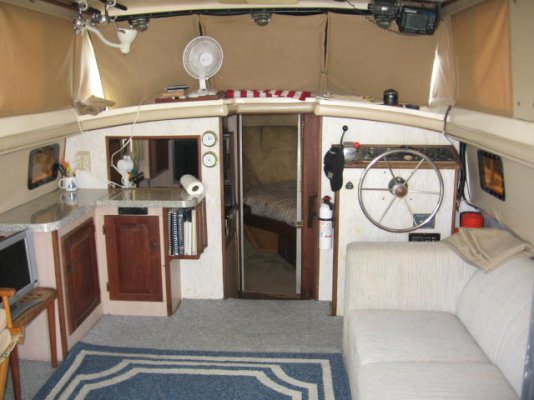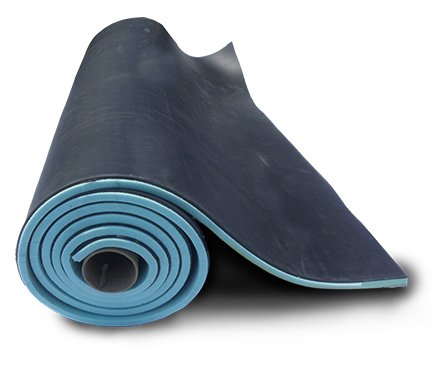TLDR
In the cabin above engine hatches
Started 85-88dba
~1.5k'ish later
Now at 71-73dba
Ok - putting this up here for those who want it a little bit quieter.
Not that I cared much as I always drove from the flybridge but after a recent outing my wife had mentioned something.. So...that's how it started.
At idle I was humming at 88 dba in the cabin. I had purchased a decibel meter to give myself a starting point.. This was many months ago.
What and where is the fun part. Took a while to really assess what could be changed vs removing major items and causing more problems.
Started with my engine hatches - had the old thin layer of who knows what loosely laying in there, plus a gap of where the hatches reside.
Lay on the floor of your engine room and look up - lots of daylight at least for me through the edging of the hatches.
added Soundown Sound-Stop Foam Panel with 1lb Barrier Layer - 2"
and Noise Grabber Mass Loaded Vinyl - 2 LB, 4' x 12', 48 Square Foot Roll of MLV
also purchased 3/4 boom mat w/adhesive from amazon to gap fill areas or walls that were difficult to deal with..
Cut large pieces of foam panel to fit inside the hatch and also underneath the cabin floor area where accessible. Fwd & aft of the water tank at the ceiling the little and sometimes large boxed areas.
Cut to fit the Vinyl and sort of created a gasket as the gap was ~1/4" all around the engine hatch and where they touch when closed. Used stainless staples with a air nailer to secure the vinyl.
My cuts in the Vinyl could be better and straighter may clean up later.
Leftover pieces were used in the compartments - under the couch / kitchen area to soundproof where I was unable to access. Directly above the engines was not possible so I proofed from the cabin area at the floor used vinyl with foam and sometimes vinyl again.. Don't use the soundproof green ****, doesn't dry - thought it was a caulking sealant - more like a forever wet adhesive(lesson learned).
I also added inline silencers to the exhaust systems (Hardin stainless exhaust silencers 4" x 5"L) Small modifications there, nothing to difficult.
Foam and Vinyl were the most effective at reducing sound , the silencers cut another 4-5dba from the back deck area and 2-3dba in the cabin.
Looked at adding mufflers but was not going to be cost effective at this time without removing fuel tanks - maybe another time.
The port cabin is next - still loud af in there
Hope this helps someone thinking about.
In the cabin above engine hatches
Started 85-88dba
~1.5k'ish later
Now at 71-73dba
Ok - putting this up here for those who want it a little bit quieter.
Not that I cared much as I always drove from the flybridge but after a recent outing my wife had mentioned something.. So...that's how it started.
At idle I was humming at 88 dba in the cabin. I had purchased a decibel meter to give myself a starting point.. This was many months ago.
What and where is the fun part. Took a while to really assess what could be changed vs removing major items and causing more problems.
Started with my engine hatches - had the old thin layer of who knows what loosely laying in there, plus a gap of where the hatches reside.
Lay on the floor of your engine room and look up - lots of daylight at least for me through the edging of the hatches.
added Soundown Sound-Stop Foam Panel with 1lb Barrier Layer - 2"
and Noise Grabber Mass Loaded Vinyl - 2 LB, 4' x 12', 48 Square Foot Roll of MLV
also purchased 3/4 boom mat w/adhesive from amazon to gap fill areas or walls that were difficult to deal with..
Cut large pieces of foam panel to fit inside the hatch and also underneath the cabin floor area where accessible. Fwd & aft of the water tank at the ceiling the little and sometimes large boxed areas.
Cut to fit the Vinyl and sort of created a gasket as the gap was ~1/4" all around the engine hatch and where they touch when closed. Used stainless staples with a air nailer to secure the vinyl.
My cuts in the Vinyl could be better and straighter may clean up later.
Leftover pieces were used in the compartments - under the couch / kitchen area to soundproof where I was unable to access. Directly above the engines was not possible so I proofed from the cabin area at the floor used vinyl with foam and sometimes vinyl again.. Don't use the soundproof green ****, doesn't dry - thought it was a caulking sealant - more like a forever wet adhesive(lesson learned).
I also added inline silencers to the exhaust systems (Hardin stainless exhaust silencers 4" x 5"L) Small modifications there, nothing to difficult.
Foam and Vinyl were the most effective at reducing sound , the silencers cut another 4-5dba from the back deck area and 2-3dba in the cabin.
Looked at adding mufflers but was not going to be cost effective at this time without removing fuel tanks - maybe another time.
The port cabin is next - still loud af in there
Hope this helps someone thinking about.
Attachments
-
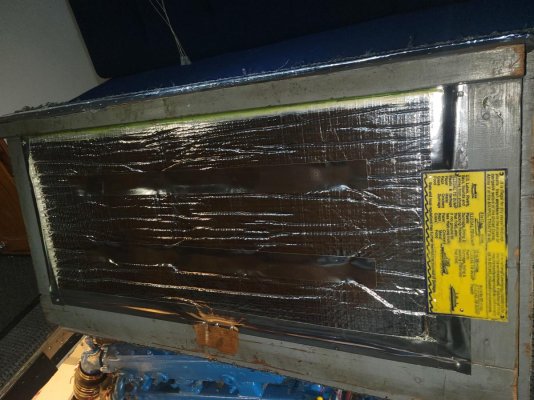 20230520_200913.jpg170.1 KB · Views: 38
20230520_200913.jpg170.1 KB · Views: 38 -
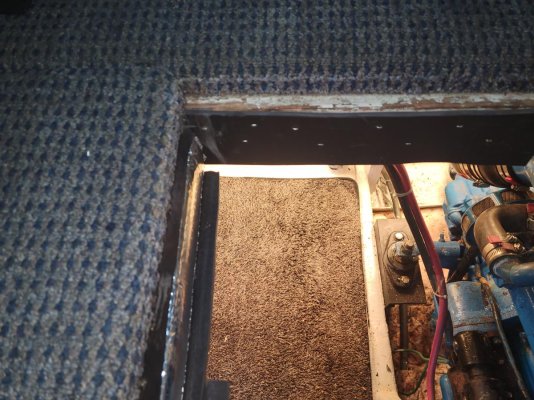 20230520_200849.jpg188.2 KB · Views: 33
20230520_200849.jpg188.2 KB · Views: 33 -
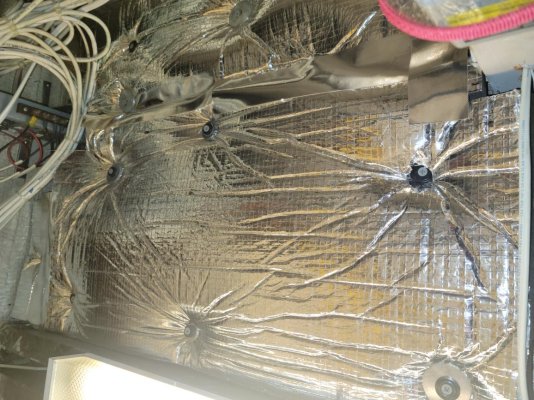 20230520_200828.jpg198 KB · Views: 36
20230520_200828.jpg198 KB · Views: 36 -
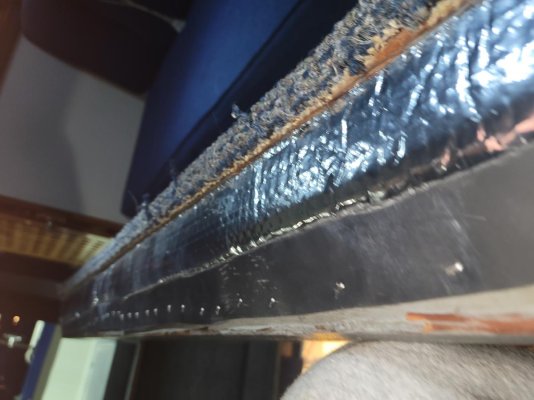 20230520_200904.jpg93.1 KB · Views: 30
20230520_200904.jpg93.1 KB · Views: 30 -
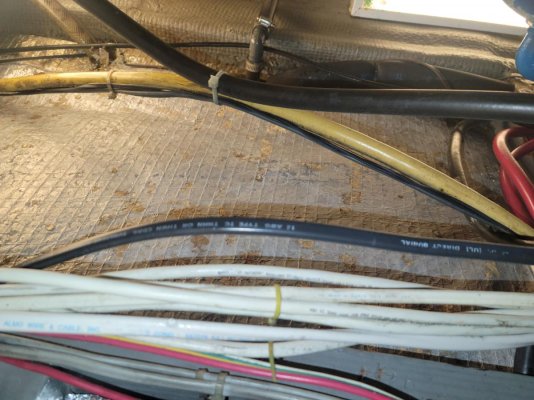 20230520_200823.jpg150.2 KB · Views: 30
20230520_200823.jpg150.2 KB · Views: 30 -
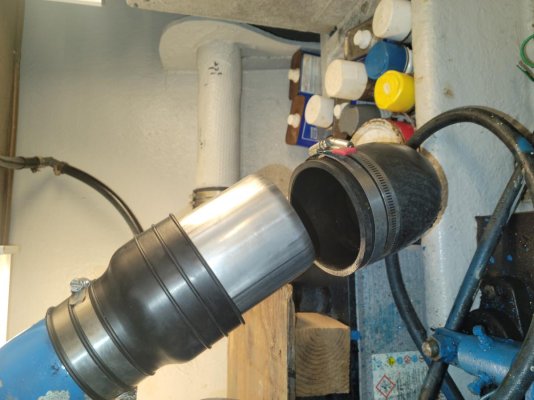 20230520_185311.jpg105.1 KB · Views: 33
20230520_185311.jpg105.1 KB · Views: 33 -
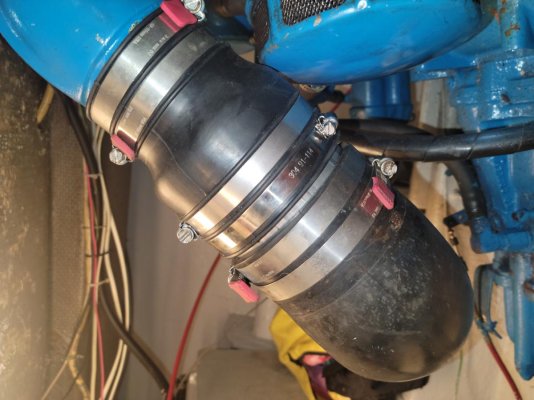 20230520_191340.jpg115.8 KB · Views: 34
20230520_191340.jpg115.8 KB · Views: 34 -
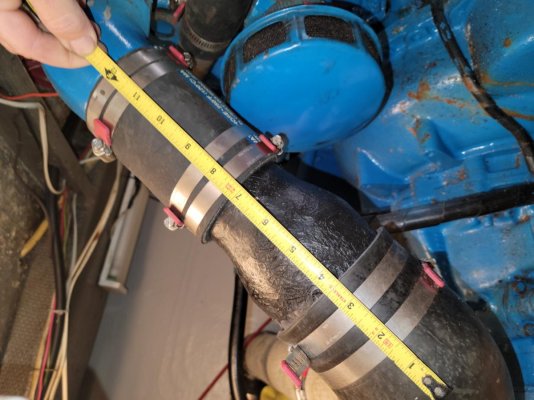 20230510_091624.jpg126.1 KB · Views: 33
20230510_091624.jpg126.1 KB · Views: 33 -
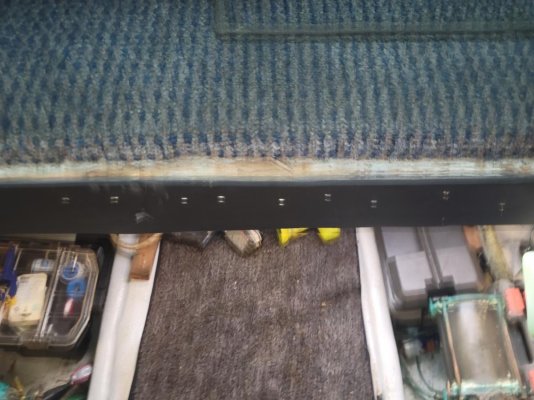 20230520_200739.jpg124.6 KB · Views: 28
20230520_200739.jpg124.6 KB · Views: 28


